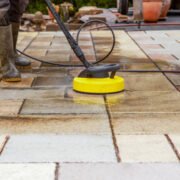Indoor air quality is a major concern in today’s world, with more and more people spending most of their time inside their homes or offices. Poor air quality can lead to various health problems, such as respiratory issues, allergies, and asthma.
One way to improve indoor air quality is to use air filters in your heating and cooling system. However, not all air filters are created equal, and understanding the MERV rating system is crucial when choosing the right filter.
What is a MERV rating system
MERV stands for Minimum Efficiency Reporting Value which ASHRAE developed to measure the effectiveness of air filters. The MERV rating system measures the ability of an air filter to remove particles from the air as it passes through the filter. The higher the MERV rating, the more effective the filter is at capturing particles.
Understanding the MERV rating system for Improving Indoor Air Quality (IAQ)
The MERV rating system ranges from 1 to 20, with a higher rating indicating better filtration. MERV 1 filters are the least efficient, while MERV 20 filters are the most efficient. The MERV rating system measures the filter’s ability to capture particles of different sizes.
MERV 1-4
These filters are commonly used in residential and commercial settings and can capture particles as small as 10.0 microns. They can capture larger particles, such as pollen, dust mites, and carpet fibers but are not effective at capturing smaller particles, such as bacteria and viruses.
MERV 5-8
These filters are more effective than MERV 1-4 filters and can capture particles as small as 3.0 microns. They are effective at capturing smaller particles such as pet dander, mold spores, and smog.
MERV 9-12
These filters are commonly used in commercial settings and can capture particles as small as 1.0 microns. They are effective at capturing particles such as lead dust, Legionella, and some bacteria.
MERV 13-16:
These filters are highly efficient and can capture particles as small as 0.3 microns. They are effective at capturing smaller particles such as smoke, bacteria, and viruses.
MERV 17-20
These filters are the most efficient and are typically used in hospitals and clean rooms. They can capture particles as small as 0.1 microns, including some viruses.
Choosing the right MERV rating for Indoor Air Quality (IAQ)
When choosing an air filter, it is important to consider the specific needs of your home or building. If you have allergies or asthma, you may want to choose a filter with a higher MERV rating to capture smaller particles that could trigger symptoms. However, a lower MERV rating may be sufficient if you have a less sensitive respiratory system.
When choosing a filter, it is also essential to consider the HVAC system’s requirements. A filter with a high MERV rating may not be compatible with all HVAC systems and could result in reduced airflow, leading to a drop in system performance.
Filters with a higher MERV rating may cause the HVAC system to work harder, which could result in higher energy bills. It is essential to consider the system’s airflow requirements and consult with an HVAC professional before installing a high-MERV filter. By understanding the different MERV ratings and how they relate to particle capture, homeowners and building managers can choose the right filter to meet their specific needs.
Conclusion
Understanding MERV ratings are essential for improving indoor air quality. Choosing the right air filter for your home or office can reduce the risk of respiratory issues and allergies. As a leading air filter supplier, Simply Filters offers custom air filters for homes with a range of MERV ratings to fit your specific needs, for example 12.5x21x1 air filters. You should invest in high-quality air filters for your home today and breathe easy with residential air filters from Simply Filters.












